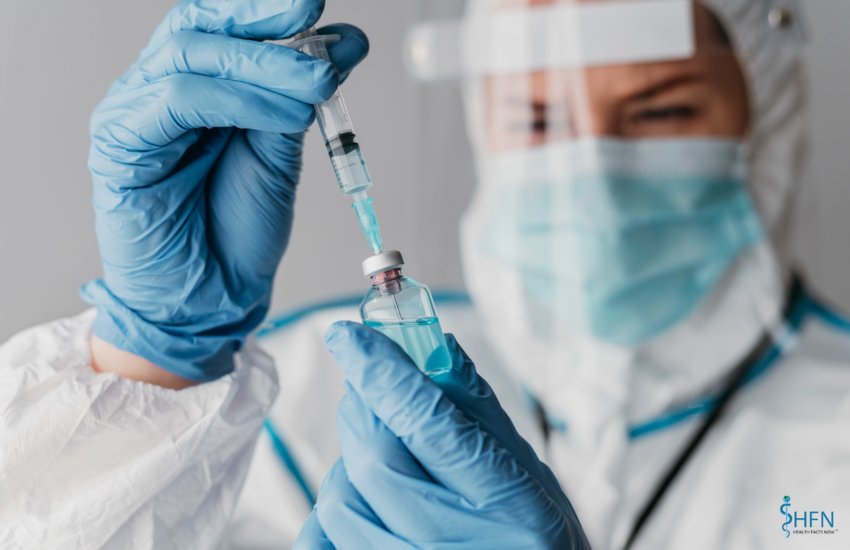ABSTRACT
Covid19 vaccines are here to save the day as high rates of SarsCov2 infection around the world continue to exceed hospital capacities. Access to vaccines is essential to prevent severe symptoms from a Covid19 infection in case of exposure to the virus. Fortunately, several vaccines have received emergency use authorization. Now that vaccines are available- many of us have questions. Are the vaccines safe? Are they effective? How do they work in our bodies?
What is a vaccine? A vaccine is a pharmacological preparation that generates protection from an illness through the production of antibodies. The vaccine stimulates the immune system by exposing it to elements of the virus that help prepare it to fight infection. A vaccine generates active immunity in a similar way to how the body develops protection when it is infected by a pathogen. Vaccines against SARs-Cov-2, specifically, can be classified by their mechanism of action, which is the way they work to stimulate your immune system [1].
The process for how vaccines provide immune memory, could be compared to a detective identifying a suspect from his/her face in a photo. In this analogy, the detective represents the immune system, the photo would be the vaccine, and the suspect would be the pathogenic agent, or in our case the virus SARs-COV-2. The immune system creates a memory of the antigen as the detective recognizes the suspect’s face. For the coronavirus, the antigen is the Spike protein, which is located on the surface of the virus. [2]
There are two main ways coronavirus vaccines present the antigen to the immune system. Based on the mechanism in which the vaccines present the antigen, they can be classified as mRNA and Viral Vector Vaccines.
The mRNA Vaccines give instructions to our cells to produce a harmless portion of the “Spike protein”. Once the protein is created, the cell disposes of the instructions. The immune system is then capable of recognizing the Spike protein as foreign; to neutralize the virus the immune system produces antibodies and activates lymphocytes. [3]
In our analogy, the detective Immune System receives a negative photo of the spike protein. The detective has to develop the photo as the body codifies the protein. -The detective uses tools such as antibodies and lymphocytes against the antigen to find and inactivate the virus. This process decreases the risk of an infection developing into a severe clinical case.
The next group of vaccines includes those based on viral vectors. Johnson & Johnson, Sputnik V, and AstraZeneca vaccines belong to this group. In this case, a harmless virus exposes the body to the Spike protein which induces an immune response without causing the illness Covid19. [4]
In our analogy, it is as if the detective orders a photo of the suspect through a delivery service. The viral vector would be the delivery man. With the photo in hand, the detective Immune System finds the suspect, in other words, neutralizes the virus.
Both mRNA and Viral Vector vaccines have the same purpose; to present the antigen to the immune system creating memory against SAR-Cov-2.
The process of generating immune memory requires some time after completing full vaccination. The estimated time to develop maximum immunity is approximately 21 days, therefore it is important to remember that we are not fully protected until then.
Vaccines are studied to show their safety and effectiveness. Effectiveness tries to measure the reduction in the risk of contracting the infection by comparing those who were vaccinated to those who received a placebo.
Nevertheless, more important than effectiveness are the patient-oriented outcomes. Taking into account that each person has a given risk of infection severity, we can understand that vaccination, in general, manages to reduce the most severe risks for the individual. With this method rather than estimating the risk of transmitting or carrying the virus, we estimate how vaccines can defend the patient individually. This is represented by the prevention of severe cases in those receiving the vaccines.
The COVID19 vaccines approved by the Food and Drug Administration have shown 100% efficacy in preventing hospitalization and death from the infection [5].

CONCLUSION
All in all, the five vaccines against SAR-Cov-2 we’ve discussed today work in two mechanisms.
The mRNA vaccines work by providing a copy of the instructions of viral spike protein to the body in order to recognize coronavirus viral particles. The viral vector vaccines use a harmless adenovirus to carry the Spike protein of SAR-Cov-2 into the body that the Immune system uses to track and neutralize the virus.
Both methods expose the body to a part of the virus to prepare the immune system in case of an infection.
-The effectiveness to prevent any symptoms of the infection varies between vaccines, but the potential of decreasing the viral propagation is very promising for all of the ones mentioned. The maximum immunity from the vaccines is achieved 17 to 21 days after completing the vaccination process. It is not yet known how long this immunity will last.
Vaccines have been shown to be safe and provide substantial protection against COVID-19. With this in mind, the more people that achieve immunity through a vaccine, the closer we will be to overcome this terrible pandemic. Although the moment in which we can obtain our vaccine is beyond our control, the responsibility to take care of our health, as well as that of our loved ones, is in our hands. Our recommendation is to maintain care and prevent infection before, during, and after the vaccination process. Taking into account that those immunized can still carry and transmit the virus, it is essential to prevent contagion through physical distancing, hand washing, wearing masks, among others.
Bibliography:
[1] ORGANIZACIÓN MUNDIAL DE LA SALUD (2021). “Vacunas” en Temas de Salud. Consultado: [26, abril, 2021]. Disponible en: https://www.who.int/topics/vaccines/es/ .
[2] COLEGIO DE MÉDICOS DE FILADELFIA (2018). Diferentes tipos de vacunas. Consultado: [26, abril, 2021]. Disponible en: https://www.historyofvaccines.org/es/contenido/articulos/diferentes-tipos-de-vacunas .
[3][4] ORGANIZACIÓN MUNDIAL DE LA SALUD (2021). “Los distintos tipos de vacunas que existen” en Centro de Prensa. Consultado: [26, abril, 2021]. Disponible en: https://www.who.int/news-room/feature-stories/detail/the-race-for-a-covid-19-vaccine-explained .
[5] CENTRO PARA EL CONTROL Y PREVENCIÓN DE ENFERMEDADES (2018). Garantizar la seguridad de las vacunas en Estados Unidos. Consultado: [26, abril, 2021]. Disponible en: https://www.cdc.gov/vaccines/hcp/conversations/ensuring-safe-vaccines.html


